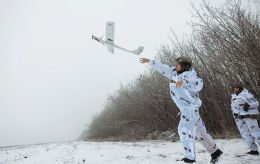Ukraine's labor market paradox: Why the unemployed can't find jobs while companies struggle to find workers
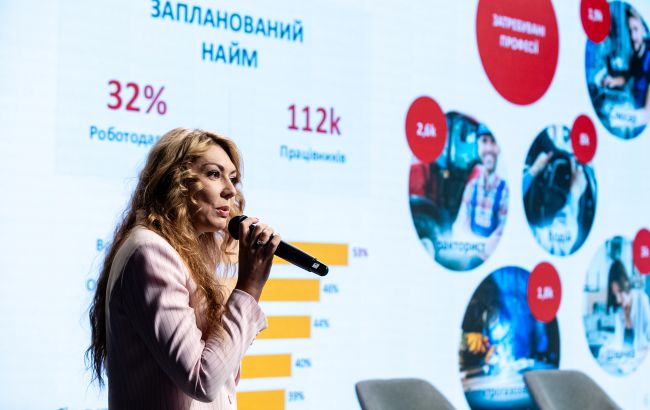 The labor market paradox. Why the unemployed in Ukraine can't find jobs while companies struggle to find workers (photo: We buid Ukraine)
The labor market paradox. Why the unemployed in Ukraine can't find jobs while companies struggle to find workers (photo: We buid Ukraine)
According to the Ministry of Social Policy, Ukraine’s labor force has decreased by 40% compared to pre-war years. The problem is compounded by the absence of an effective career guidance system and mismatched expectations between employers and workers. Read RBC-Ukraine’s in-depth analysis to learn which professions are currently most in demand, where to find jobs for over a million veterans, and how many people are experiencing professional burnout.
Key questions:
- How severe is the labor shortage across different sectors?
- Why does the education level of the unemployed not align with employers’ needs?
- Which professions are most in demand?
- How will vocational education be reformed?
- What employment programs for veterans already exist or are in progress?
- How many people feel burned out at work and are considering quitting?
Population decline – the key issue in the labor market
The challenges currently facing Ukraine’s labor market were discussed at the conference People Matter: The New Architecture of the Recovery Economy organized by the independent think tank We Build Ukraine.
At the beginning of the event, Laszlo Juhasz, Managing Director of Boston Consulting Group (BCG) in Central and Eastern Europe, recalled a large-scale study conducted jointly with We Build Ukraine. The result was a comprehensive Strategy for Ukraine’s Economic Recovery until 2040, which identifies eight key economic sectors and four main drivers of growth—one of which is the workforce.
Presenting an overview of Ukraine’s labor market, Juhasz began by pointing out that Ukraine’s population had already been declining before the full-scale invasion. The war has significantly worsened the situation — many people fled the country, and many others joined the defense forces. According to BCG research, it was mostly young, working-age individuals who left, intensifying the labor shortage within the country.
The population decline is not unique to Ukraine — it is also a trend in Central and Eastern European countries like Poland, Romania, Hungary, and Bulgaria. But Ukraine still lags behind its neighbors in terms of productivity and wages, although both have shown growth in recent years.
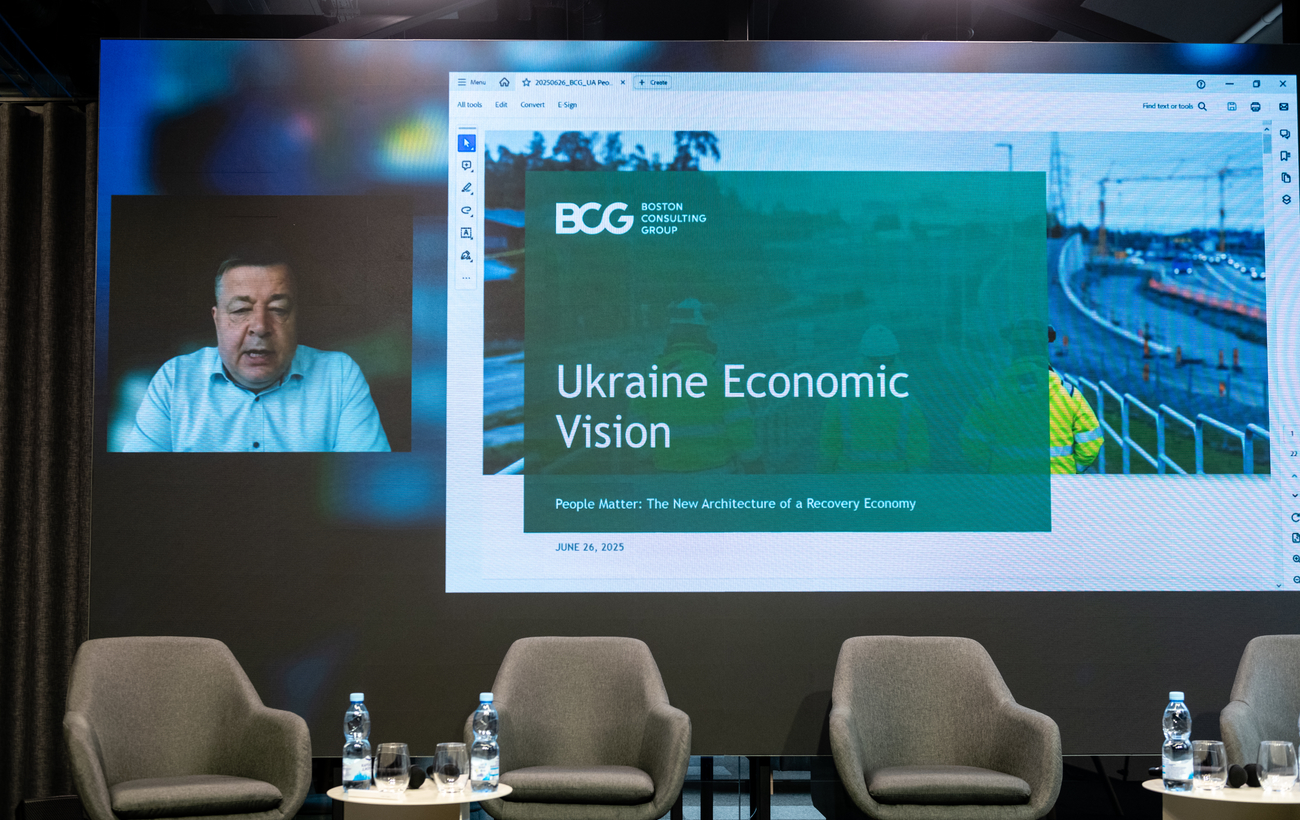
Photo: Laszlo Juhasz, Managing Director of Boston Consulting Group in Central and Eastern Europe, emphasized that the labor force is one of the key drivers of Ukraine’s economic growth
A positive feature of Ukraine’s labor market, Juhasz noted, is the high level of education, comparable to European countries, including Germany.
“We can build economic growth on this foundation. It could become a factor that plays a major role in Ukraine’s future economic development,” he said.
Summarizing the study's findings, Juhasz said that in the short term, Ukraine needs to reform its vocational training system to ensure people acquire the skills the economy actually needs. In the long term, it is essential to create modern vocational centers and gradually align wage levels with European standards.
The importance of creating such training centers was also supported during the conference by Dmytro Sherengovsky, Vice-Rector for Outreach and Social Engagement at the Ukrainian Catholic University, and Artem Pavlychenko, First Vice-Rector of Dnipro University of Technology (Polytechnic).
The education leaders emphasized that Ukrainian universities are already actively cooperating with businesses to ensure their curricula reflect real labor market demand. At Dnipro Polytechnic, for example, students are being trained to work with modern automated production systems, which are widely used across industries.
Motivation of job seekers
A more detailed study on the level, structure, and motivation of unemployed individuals in Ukraine was presented by Olena Kolesnikova, Chair of the Sectoral Council of the Ukrainian Federation of Metallurgists. The research was conducted with the support of the Swiss humanitarian organization Helvetas Swiss Intercooperation under an agreement with Czech government institutions. It included responses from 55,000 Ukrainian companies across various regions—employing a total of 4.2 million people — and 69,000 unemployed individuals.
According to the study, 40% of companies reported experiencing a labor shortage, driven by military mobilization, insufficient qualifications among applicants, and overly high expectations from job seekers. Another striking finding was that only 79% of individuals registered with employment centers were actually willing to work. The rest are registered primarily to receive financial support. Most people are not focused on professional development—only 28% of unemployed respondents consider it important.
The most in-demand jobs today, the study revealed, are blue-collar professions such as drivers, seamstresses, tractor operators, mechanics, and gas-electric welders.
The seamstress profession, in particular, highlighted a major mismatch between the education system and labor market needs. Kolesnikova explained that while many vocational institutions in Ukraine train people as seamstresses, the 1.5-year programs are often padded with additional subjects, resulting in graduates with higher qualifications—such as fashion designers.
“When someone graduates with that level of qualification, they no longer want to work as a seamstress. They aim for a higher-level position, but employers specifically need seamstresses. That’s how we end up with a shortage,” Kolesnikova said.
The research also found that the first factor unemployed people consider is salary — 80% are willing to work for less than 20,000 UAH per month. Interestingly, companies often offer salaries higher than what most candidates expect, yet the labor shortage persists.
There are other factors that significantly influence job seeker motivation — work schedule is a key one. Only 56% of respondents are willing to work full-time, whereas 94% of available jobs require full-time commitment.
The study also examined attitudes toward further education and reskilling. Only 23% of unemployed individuals are willing to undergo training.
“30% are completely unwilling to change their profession, even if we know that their current one is no longer in demand,” Kolesnikova said. Additionally, 47% of unemployed people are unsure whether they need further education at all.
“These are poor indicators. They reflect a widespread misunderstanding of the value of education and what it’s for,” she added. Unfortunately, many people don’t see how education or retraining could help solve their employment issues. Ukraine currently lacks a functioning career guidance system that would help people see the connection between education and career paths.
Another important factor in successful employment is the willingness to relocate — moving to areas where offices or production facilities are located. According to the research, the group most open to this idea is people with disabilities.
“This was completely unexpected. All other groups are less mobile. Among those willing to relocate, the highest percentage is among people with disabilities. And surprisingly, internally displaced persons (IDPs) are not as active,” Kolesnikova concluded.
Labor shortages across different sectors of the economy
Speaking at the opening of the conference, Oleksandr Kubrakov, Chair of the Supervisory Board of the independent think tank We Build Ukraine, emphasized that the availability of a skilled workforce is a key factor that affects all sectors of the economy.
“We’ve lost people, territories, and industries. But at the same time, we now have the opportunity to export our products to new markets. After exiting Russia, international companies have started to consider Ukraine as a place to do business. This requires a shift in perspective — we must recognize the emergence of greenfield sectors, where investors can start from scratch,” Kubrakov noted.
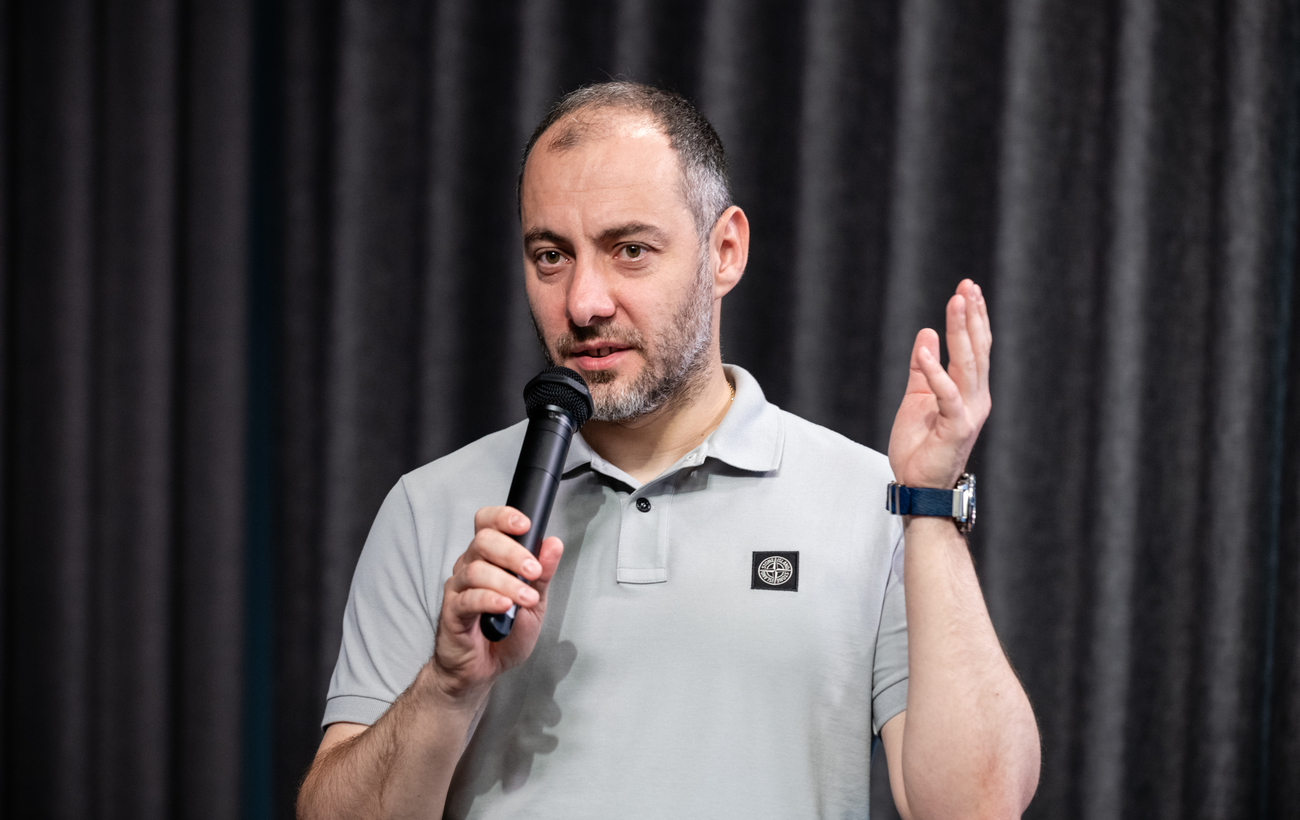
Photo: Oleksandr Kubrakov, Chair of the Supervisory Board at We Build Ukraine, stressed that despite the loss of people and territories, Ukraine still has great potential for exports and entering global markets
He added that investment attraction must be aligned with addressing labor market challenges so that newly created enterprises are staffed with motivated and skilled workers.
Representatives from specific industries also spoke about workforce shortages. Ihor Fomenko, Head of the Defense Division of the Ukrainian Federation of Employers, said the defense industry—which has seen the most growth during the war—is facing a serious labor shortage.
One reason, he explained, is the psychological pressure on those working in the defense sector, as they are often direct targets of the enemy.
“There was a missile strike yesterday, but tomorrow you’re expected to return to work. This is a profound issue that must be considered when recruiting people into the defense sector,” Fomenko said. He added that another challenge is the immense responsibility employees bear in fulfilling state contracts.
Another contributing factor is the rapid technological evolution on the battlefield.
“Every 4 to 6 months, the technical specifications of certain weapon systems are changing. This directly affects the requirements for personnel in the sector,” he noted. The fact that defense companies compete among themselves for skilled and responsible workers further illustrates the shortage.
Labor shortages are also a challenge for the agro-industrial sector. According to Oleh Khomenko, CEO of the Ukrainian Agribusiness Club, the pre-war shortage in agriculture was around 10%, but today it has grown to 30%. The main reasons include the physically demanding and low-prestige nature of agricultural work, and the requirement to live in rural areas.
“Young people aren’t interested. They want part-time jobs, flexible hours, and three-day work weeks. Unfortunately, agriculture doesn’t offer that,” commented Khomenko. He added that the lack of infrastructure in rural areas is another reason why young people are reluctant to move there.
To address the labor shortage, many agricultural companies are investing in new machinery that reduces the need for human labor.
Enhancing the prestige of vocational professions
In a comment to RBC-Ukraine during the conference, Olena Kolesnikova emphasized the urgent need to strengthen career guidance. This work, she said, should begin in schools—children must understand the link between their chosen education path and future employment. Separate career guidance programs should be developed for different population groups: school graduates, adults, seniors, and veterans.
“Unless we clearly explain to people how education is connected to future employment, the labor market imbalance will persist,” she said.
The Federation is also involved in preparing the second reading of the updated law On Vocational Education.
Under this reform, it is proposed that supervisory boards be established within vocational institutions. These boards would include representatives of businesses and local governments, which manage municipal property. This structure would allow businesses to directly influence educational programs and ensure that vocational schools train specialists in high-demand professions.
According to Kolesnikova, it is equally important to revise outdated Soviet-era health requirements for certain professions. These standards no longer reflect current realities: many production processes have been automated, equipment has changed, and workplace safety has improved. As a result, veterans who have sustained injuries—but are still fully capable of performing specific jobs—are being turned away by employers due to outdated formal requirements.
“We’ve already started a dialogue with the Ministry of Veterans Affairs to revise these old Soviet approaches to employment and workplace regulations, and to ease some of the bureaucratic restrictions,” she added.
There is also a proposal to rename “vocational school” to “college” and “schooler” to “student”, which, according to its authors, would help boost the status of these institutions and the people attending them.
Forged by battle: State employment programs for veterans
A separate session of the We Build Ukraine conference was dedicated to the issue of veteran employment. Deputy Minister for Veterans Affairs Yuliia Kyrylova reported that over one million veterans are currently registered in Ukraine.
“1.3 million - this is a proactive population that will return to their workplaces. These are people who already have professions and valuable experience. We must create the conditions to ensure we don’t lose them,” she said.

Photo: Deputy Minister for Veterans Affairs Yuliia Kyrylova emphasized that the state and society must help over one million veterans find employment
To support this goal, the Ministry has launched a platform called Veteran’s Career. On the website, veterans returning from war can upload their CVs, list civilian skills, and highlight new knowledge and abilities acquired during military service. The Ministry also implements professional reintegration programs, such as government-funded retraining and opportunities to pursue further education.
Kyrylova highlighted that the most important current initiative is a joint effort between the Ministry of Veterans Affairs, the National Qualifications Agency, and the Employers’ Federation to develop a new civilian qualification called Forged by Battle.
“We are translating military experience into civilian terms and making corresponding updates to professional standards,” she explained.
Veterans can already validate their prior civilian qualifications at designated assessment centers. This makes it easier for them to present themselves to employers.
Meanwhile, the parliament, Verkhovna Rada, is preparing to discuss legislation that would introduce employment quotas for veterans in public service and the private sector.
“There are several proposals for mandatory quotas, for example in public administration. One such proposal sets the quota at a minimum of 10%. A 5% quota for private business is also under discussion,” said Olena Shuliak, Chairwoman of the Parliamentary Committee on the Organisation of State Power, Local Self-Government, Regional Development and Urban Planning.
She noted that the quota initiative is still at the discussion stage, as there is not yet a unified position among stakeholders—though the idea of quotas enjoys public support.
“We don’t want this to become a symbolic gesture that doesn’t work. That’s why on July 24, there will be major committee hearings on this topic in the Parliament’s Committee on Social Policy. I’m confident we’ll find a solution that truly works for veterans—people who deserve our utmost respect,” Shuliak added.
Business engagement in supporting veterans
At the We Build Ukraine conference, business representatives shared their initiatives to support veterans. Dmytro Oliynyk, Chair of the Ukrainian Federation of Employers, emphasized the importance of maintaining regular contact with employees who have been mobilized, providing them with support throughout the duration of their military service.
One of the companies with the largest number of veterans among its staff is Metinvest Group. According to Zoia Heintse, Head of Public Relations at the company, nearly 11,000 Metinvest employees have served or are currently serving in the defense forces, and around 1,000 have already returned to their civilian jobs. The group is open to hiring veterans, including those who previously worked for other companies.
Metinvest’s support for its military employees begins from the moment they are mobilized and includes both physical and psychological assistance. In the event of injury, the company helps with rehabilitation and covers the costs of prosthetics and recovery. According to Heintse, $250,000 was allocated for these efforts in 2024, with plans to increase the amount to $550,000 this year.

Photo: Zoia Heintse, Head of Public Relations at Metinvest Group, emphasized that it is a society that must adapt to veterans, not the other way around
When a veteran returns from war, they can confirm their professional qualifications directly at their workplace, which significantly speeds up the reintegration process. If a veteran is unable to return to their previous position, they are offered retraining opportunities—including at the company’s own corporate university, Metinvest Polytechnic.
Heintse also noted that the company places special emphasis on training programs for its teams, teaching them how to collaborate effectively with colleagues returning from the front.
“Veterans should not have to adapt to society. It is the society that should adapt to them,” she stated.
Burnout in the workplace
While soldiers bear the heaviest burden of the full-scale war, people working on the home front are also living under constant stress. This is confirmed by research conducted by Gradus Research.
“Does constant stress affect health? Yes, it does—and severely. Two out of three men and three out of four women report feeling burned out,” said Yevheniia Blyzniuk, founder and CEO of Gradus Research.
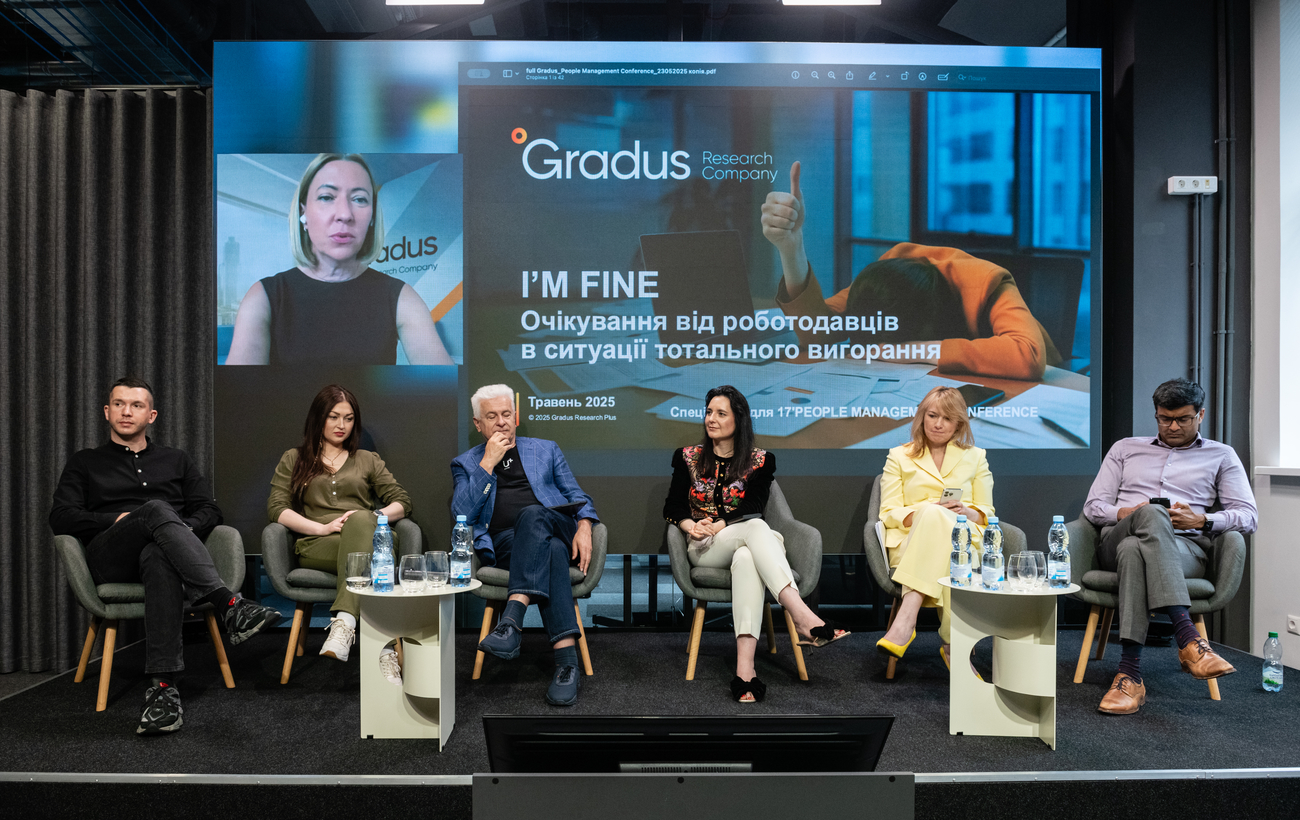
Photo: Yevheniia Blyzniuk, founder and CEO of Gradus Research, noted that constant stress reduces productivity and leads to professional burnout
According to her, burnout is typically understood as the feeling of having no strength to get up in the morning and carry out daily tasks. The causes include problems at work and a sense of uncertainty about the future. Many people find comfort in communicating with loved ones. It’s also crucial for employers to remind workers of their value.
The study found that 40–50% of respondents are considering quitting their jobs. To retain employees and maintain high productivity, financial compensation remains the primary factor. However, a positive work environment, career growth opportunities, flexible schedules, and inspiring leadership also play significant roles.
“The most desired initiative from companies is flexibility in where and when people work. Employees have become accustomed to remote work and prefer to keep that option,” Blyzniuk added.
Modern challenges
A new and pressing challenge in the labor market is the advancement of artificial intelligence technologies and automation. According to Yurii Antoniuk, Vice President and Head of EPAM in Central and Eastern Europe, these two factors are already beginning to replace a number of professions.
“We need to think about what we’ll do with people when AI increasingly replaces and complements our work. This applies not only to digital sectors like IT, where structured layoffs are already happening in large companies but also to physical labor, which is being affected by automation,” said the EPAM executive.
According to him, both businesses and the government must offer people the opportunity to prepare for these changes. It’s necessary to consider retraining and teach people how to work with artificial intelligence. In just 3–5 years, the situation could change significantly, and demand for many professions may decline. That’s why both companies and individuals need to be ready.
At the same time, there are some positive trends. Commenting on the issue of many Ukrainians going abroad, Oleksandr Kubrakov, Chair of the Supervisory Board at We Build Ukraine, shared an example from his own experience in the IT sector: in 2014, many IT professionals from Crimea and eastern Ukraine also left the country—but later returned.
“It turned out that within 2–4 years, the vast majority came back, especially in IT. One reason was that their salary level didn’t change much after moving, but the cost of living in the new country was significantly higher,” Kubrakov explained.

Photo: Oleksandr Kubrakov, Chair of the Supervisory Board at We Build Ukraine, emphasized that despite large-scale migration, many people are returning and building their careers in Ukraine
Another example is the construction and metallurgy sectors. When the state began actively communicating with businesses about the need to raise average wages, the outflow of workers decreased—until 2022.
“We worked persistently with businesses and urged them to significantly raise minimum wages in the sector. As a result, wages in construction gradually rose from 9,000 to 25,000 UAH, and in metallurgy—to nearly €1,000. And it really worked—people began to return. So, if there’s safety and decent pay, people will come back. And in turn, we’ll see economic growth,” Kubrakov concluded.
The video recording of the conference People Matter: The New Architecture of the Recovery Economy is available via the link.
